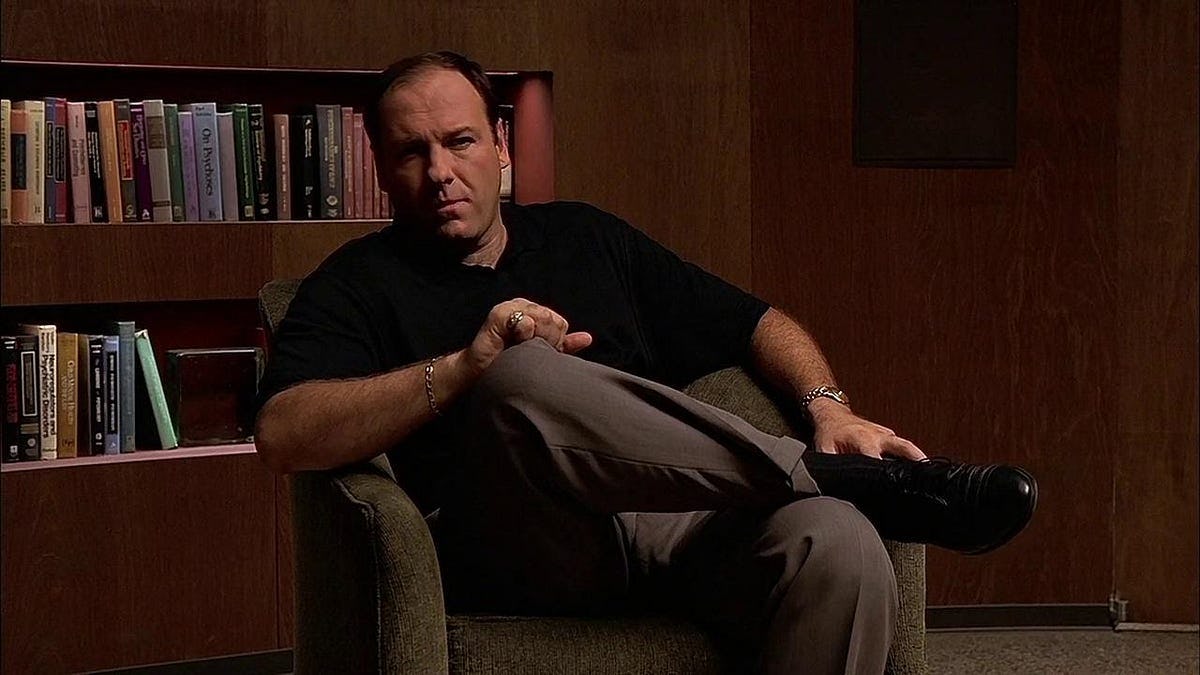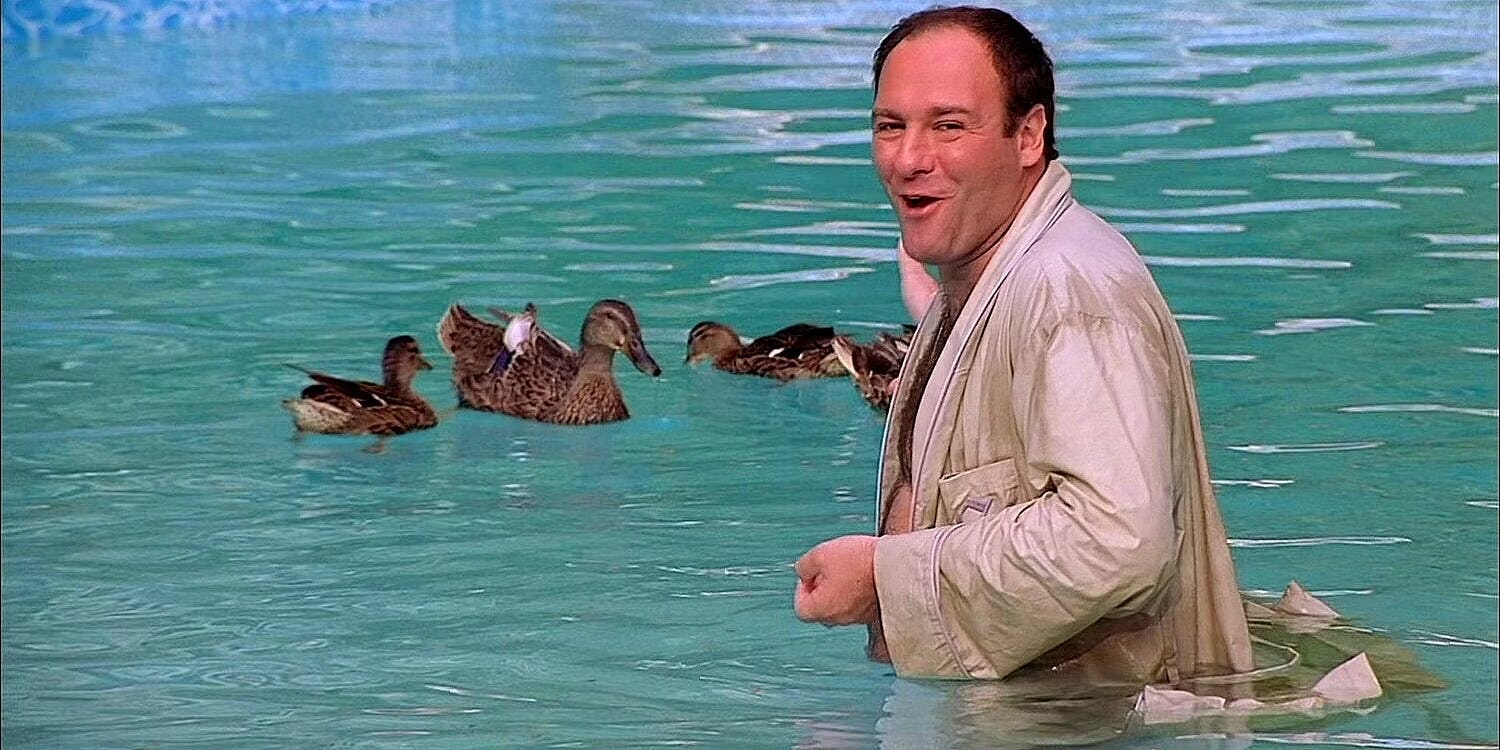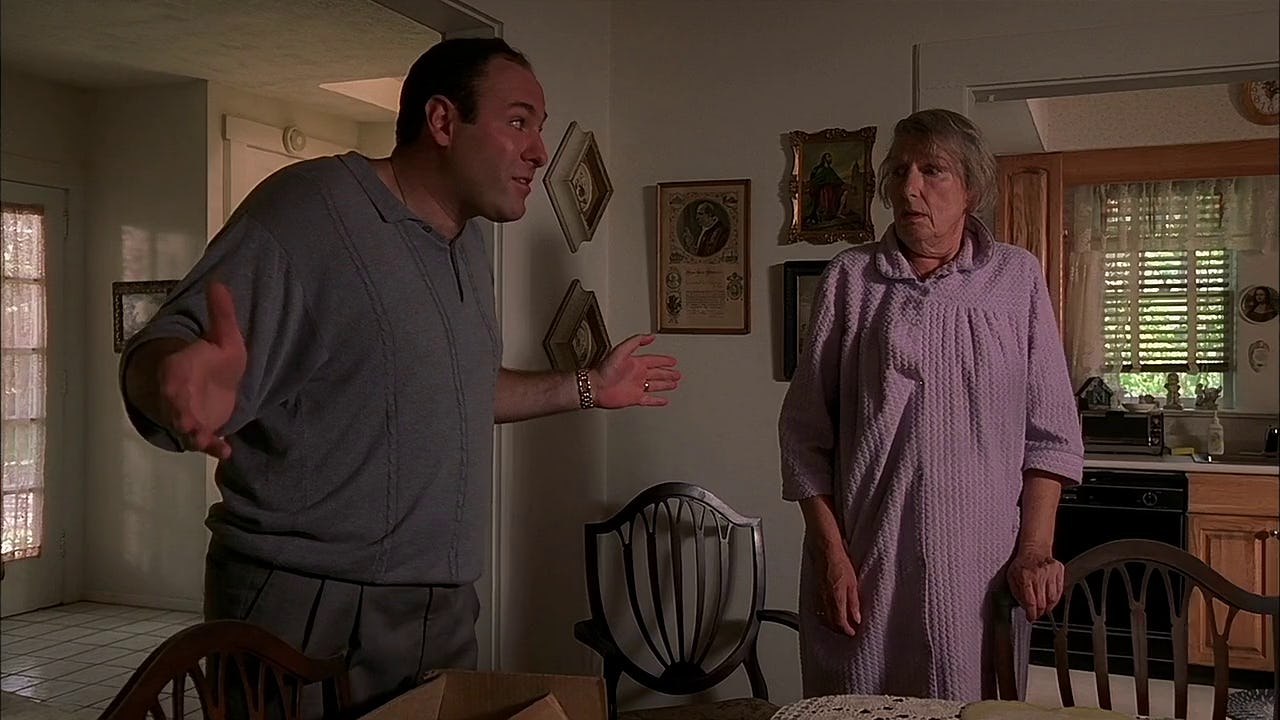
“Lately, I’m getting the feeling that I came in at the end. The best is over.”
This single line of dialogue sums up so much about turn-of-the-millennium television. After the 1970s and ’80s saw constant innovation in what television could accomplish, the late ’90s plateaued with the most palatable and least risky options: rote sitcoms, generic crime procedurals, and monster-of-the-week genre shows.
HBO, however, had always positioned itself as being “not TV,” and the first episode of its most influential show proved it could back that claim up. Not only did “The Sopranos,” the iconic crime drama’s self-titled pilot, put HBO on the cutting edge of innovative television, but it also ushered in a new age of TV so influential we just call it “Peak TV” now.
25 years ago, The Sopranos opened with an image that would soon become iconic: James Gandolfini’s macho Tony Soprano sitting across from his therapist Dr. Jennifer Melfi (Lorraine Bracco.) He makes it very clear he doesn’t want to be there, but his doctor prescribed the sessions after he suffered a panic attack at his son’s birthday party.

Tony is the ultimate unreliable narrator. He tells the story of his life, but the viewer sees another life. He’s in “waste management,” but his mob ties are evident. He “got coffee” with a debtor, but we see him chase the guy down and break his leg. But he eventually opens up about his personal life, and we learn about the loss of his father, his overbearing mother, and his cynical worldview.
It’s difficult to overstate The Sopranos’ influence. Simultaneously a crime drama and a family drama, its connection to classics like Goodfellas and The Godfather are obvious, but its look at the rise of therapy and antidepressants placed it in a new era. Most importantly, it painted a portrait of masculinity that had never been seen on TV. Tony is a brutal mob boss, but he’s also a son, a husband, and a father who claims to be trying his best while often surrendering to his worst impulses. Seeing this nuance between what men claim to be and what they really are was unprecedented.

The Sopranos would rocket to massive popularity, nabbing 21 Emmys from a whopping 112 nominations, and airing a finale that would shock the nation and is still debated today. But in this pilot, before the acclaim began rolling in, we can see the risk being taken in bouncing between Tony having a quiet moment with his daughter and a restaurant being blown up on his orders.
Today, it’s common for the premiere of The Sopranos to be pegged as the beginning of peak TV. In the wake of The Sopranos, TV shows were given more care — and larger budgets — allowing them to become bolder, better written, more experimental. The trend started on HBO with shows like The West Wing and The Wire, but a new focus on dramas with big ideas and complicated men soon led us to Lost, Mad Men, and Breaking Bad.
Of course, all Golden Ages end. The streaming model’s conquest of television may feel like a natural development, but revisiting The Sopranos offers a reminder of what the medium has retreated from. Tightened budgets and smaller writers’ rooms have led to shorter dramas with little room for experimentation. Streaming offers its own advantages and has produced its own gems, but it’s difficult to imagine a Netflix original taking the same wild risks that The Sopranos would go on to play with.
Tony Soprano wasn’t the hero television viewers expected, but he captured an anxious, indulgent, and experimental age. He may have arrived at the end of the millennium, but he was wrong: the best was far from over.







